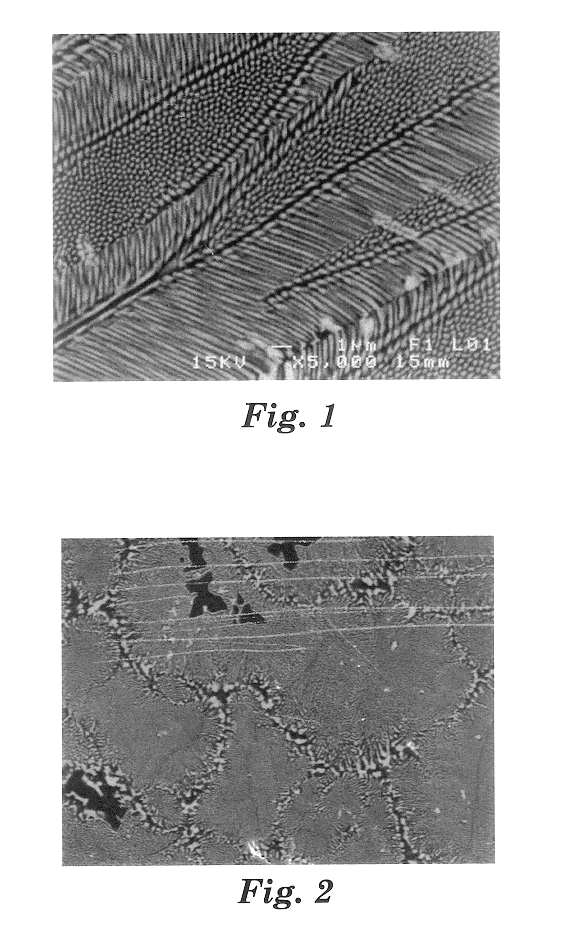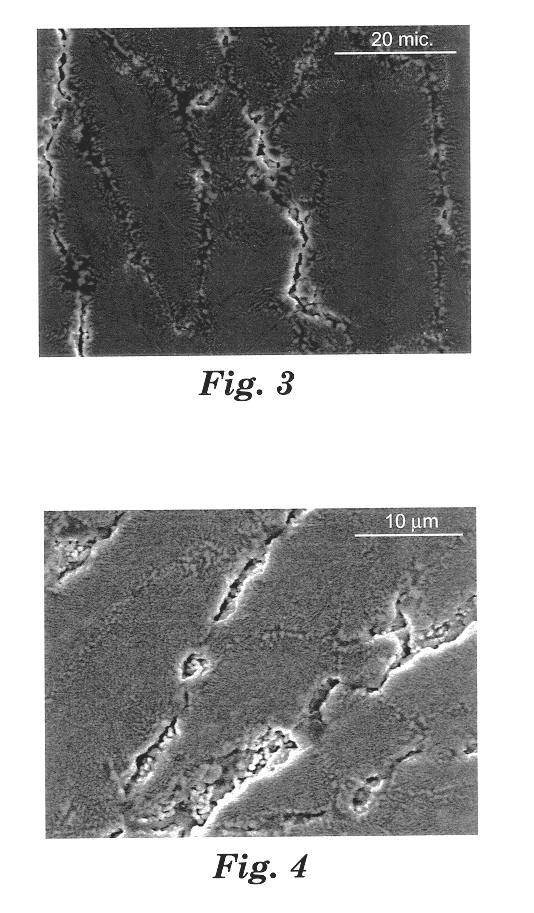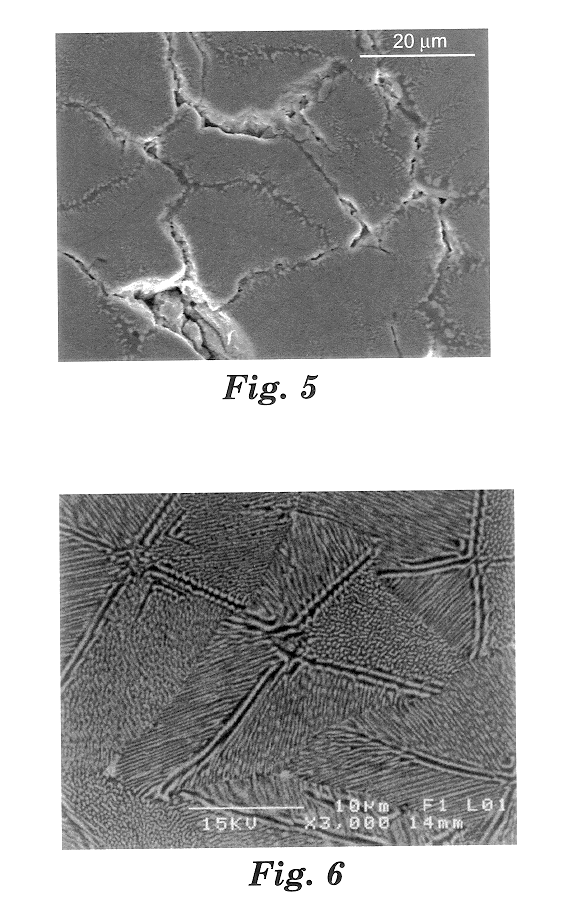Fused aluminum oxycarbide/nitride-Al2O3.rare earth oxide eutectic materials
- Summary
- Abstract
- Description
- Claims
- Application Information
AI Technical Summary
Problems solved by technology
Method used
Image
Examples
example 1
Grinding Performance of Example 1 and Comparative Examples A-C
The grinding performance of Example 1 and Comparative Examples A-C coated abrasive discs were evaluated as follows. Each coated abrasive disc was mounted on a beveled aluminum back-up pad, and used to grind the face of a pre-weighed 1.25 cm.times.18 cm.times.10 cm 1018 mild steel workpiece. The disc was driven at 5,000 rpm while the portion of the disc overlaying the beveled edge of the back-up pad contacted the workpiece at a load of 8.6 kilograms. Each disc was used to grind individual workpiece in sequence for one-minute intervals. The total cut was the sum of the amount of material removed from the workpieces throughout the test period. The total cut by each sample after 12 minutes of grinding as well as the cut at 12th minute (i.e., the final cut) are reported in Table 1, below.
example 2
Example 2 fused material was prepared as described in Example 1, except the polyethylene bottle was charged with 138.5 grams of alumina powder ("APA-0.5"), 140.5 grams of ytterbium oxide powder (obtained from Aldrich Chemical Company, Inc.), 21 grams of aluminum nitride powder (Type F, obtained from Tokuyama Soda Co.), and 150 grams of isopropyl alcohol.
FIG. 6 is an SEM photomicrograph of a polished section (prepared as described in Example 1) of fused Example 2 material. Referring to FIG. 6, the photomicrograph shows a eutectic-derived microstructure comprising a plurality of colonies. The colonies were about 5-30 micrometers in size. The orientation and morphology of crystals making up the colonies varied from one colony to another. Based on powder x-ray diffraction of a portion of Example 2 material, and examination of the polished sample using SEM in the backscattered mode, it is believed that the white portions in the photomicrograph were crystalline Yb.sub.3 Al.sub.5 O.sub.12,...
example 3
Example 3 fused material was prepared as described in Example 1, except the polyethylene bottle was charged with 139 grams of alumina powder ("APA-0.5"), 140 grams of dysprosium oxide powder (obtained from Aldrich Chemical Company Inc.), 21 grams of aluminum nitride powder (Type F, obtained from Tokuyama Soda Co.), and 150 grams of isopropyl alcohol.
FIG. 7 is an SEM photomicrograph of a polished section (prepared as described in Example 1) of fused Example 3 material. Referring to FIG. 7, the photomicrograph shows a eutectic-derived microstructure comprising a plurality of colonies. The colonies were about 5-30 micrometers in size. The orientation and morphology of crystals making up the colonies varied from one colony to another. Based on powder x-ray diffraction of a portion of Example 3 material, and examination of the polished sample using SEM in the backscattered mode, it is believed that the white portions in the photomicrograph were crystalline Dy.sub.3 Al.sub.5 O.sub.12, and...
PUM
| Property | Measurement | Unit |
|---|---|---|
| Pressure | aaaaa | aaaaa |
| Percent by mass | aaaaa | aaaaa |
| Size | aaaaa | aaaaa |
Abstract
Description
Claims
Application Information
 Login to View More
Login to View More - R&D
- Intellectual Property
- Life Sciences
- Materials
- Tech Scout
- Unparalleled Data Quality
- Higher Quality Content
- 60% Fewer Hallucinations
Browse by: Latest US Patents, China's latest patents, Technical Efficacy Thesaurus, Application Domain, Technology Topic, Popular Technical Reports.
© 2025 PatSnap. All rights reserved.Legal|Privacy policy|Modern Slavery Act Transparency Statement|Sitemap|About US| Contact US: help@patsnap.com



